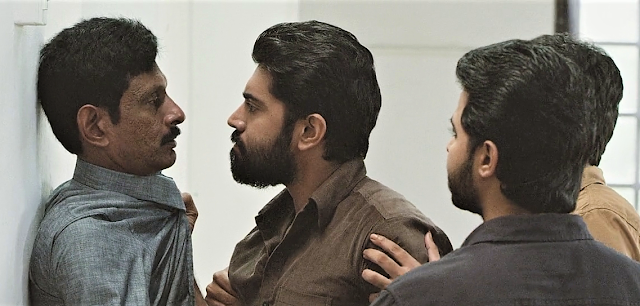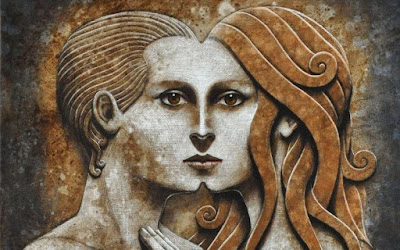The Philosophy Of Premam - Chapter One - Matha, Pitha, Guru, Devam and Jungian Archetypes Isn't It?
A fundamental staple in screenwriting and film analysis are archetypes. So what is an archetype? The concept of archetypes is taken from the collective unconsciousness, a theory developed by the psychologist Carl Gustav Jung. In the collective unconsciousness, Jung suggest that all human beings share an inborn deep universal unconscious mind which is hidden beneath the personal psyche. By applying this concept to literature and media, we understand an archetype to be a typical character, an action or a situation that seems to represent such universal patterns of human nature. All works of art hinge on certain fundamental character types to further the narrative. Archetypes help to understand character motivations and narrative purposes. Which raises the question; what do archetypes have to say about Premam?
· The Lover Archetype
Part mystic, part genius, the Sage is an essential driver of the Journey, delegating the task of changing the world to their often younger, more naive and eager fellows. Malar, the secondary protagonist, resembles a quasi-Sage archetype. Her name, meaning 'flower', is consciously chosen to contrast to the film's butterfly leitmotif. A teacher by profession, Malar is by desire a wisdom oriented character. Although she plays into the Lover in the second act, her over-arching purpose in the film is to aid George to his end; to help him form an ability to experience intimacy.
Besides the aforementioned three, some of the other archetypes explored in the film possibly include:
· The Seductress (?) - femme fatale; highly attractive, manipulative, driven, intelligent and fatal to men - Mary
· The Companion - a devoted friend, supportive, loyal - Shambu, Koya and Jojo
· The Fool - represents naivety, ignorance, and a lack of particular skill - Girirajan Kozhi and Vimal Sir
Archetypes only begin to explain the human psyche. Another interesting concept that, for Jung, follows the archetypes is that of 'the anima and the animus'. This possibly plays into a central metaphor of Premam and will be the subject of the next post.
Fin.
· The Lover Archetype
Contrary to the popular Indian narrative, the male protagonist in Premam does not represent the hero archetype; rather, he plays into an archetype who wants to form meaningful relationships.
George David, a name meaning 'beloved by God', is an amalgamation of the Everyman and the Lover archetype. The Lover is the archetype of emotion, feeling, idealism, and sensuality. George's journey is not merely a physical exercise, but an enigma within. George's purpose is to structure his soul as to experience intimacy. Starting from the bottom, he builds up real vulnerability to aid him in his journey to mature in his masculinity (and now he's here).
Like George, Celine is also an example of the Lover, but with a tinge of Orphan. A (possibly) broken individual, she grew up in her sister's (attractive) shadow, resulting in feelings of inadequacy. Like George, her purpose is overcome her insecurities and to experience intimacy.
· The Sage ArchetypeGeorge David, a name meaning 'beloved by God', is an amalgamation of the Everyman and the Lover archetype. The Lover is the archetype of emotion, feeling, idealism, and sensuality. George's journey is not merely a physical exercise, but an enigma within. George's purpose is to structure his soul as to experience intimacy. Starting from the bottom, he builds up real vulnerability to aid him in his journey to mature in his masculinity (and now he's here).
Like George, Celine is also an example of the Lover, but with a tinge of Orphan. A (possibly) broken individual, she grew up in her sister's (attractive) shadow, resulting in feelings of inadequacy. Like George, her purpose is overcome her insecurities and to experience intimacy.
Part mystic, part genius, the Sage is an essential driver of the Journey, delegating the task of changing the world to their often younger, more naive and eager fellows. Malar, the secondary protagonist, resembles a quasi-Sage archetype. Her name, meaning 'flower', is consciously chosen to contrast to the film's butterfly leitmotif. A teacher by profession, Malar is by desire a wisdom oriented character. Although she plays into the Lover in the second act, her over-arching purpose in the film is to aid George to his end; to help him form an ability to experience intimacy.
Besides the aforementioned three, some of the other archetypes explored in the film possibly include:
· The Seductress (?) - femme fatale; highly attractive, manipulative, driven, intelligent and fatal to men - Mary
· The Companion - a devoted friend, supportive, loyal - Shambu, Koya and Jojo
· The Fool - represents naivety, ignorance, and a lack of particular skill - Girirajan Kozhi and Vimal Sir
Archetypes only begin to explain the human psyche. Another interesting concept that, for Jung, follows the archetypes is that of 'the anima and the animus'. This possibly plays into a central metaphor of Premam and will be the subject of the next post.
Fin.









Comments
Post a Comment